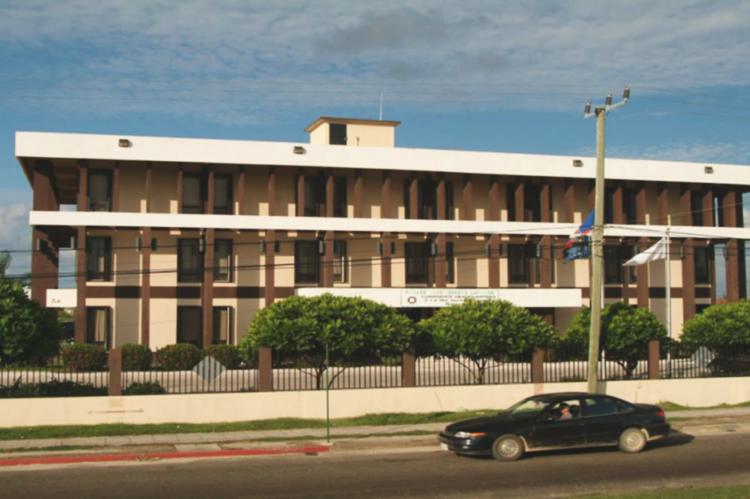SOVEREIGN ENERGY OR SOVEREIGN RISK?
Belizeans Deserve Full Disclosure on the Fortis-BEL Deal
By Omar Silva | Editor/Publisher
National Perspective Belize I Digital 2007
Belize City: Friday 17th October 2025
Electricity costs in Belize are at an all-time high. Households struggle to keep the lights on, businesses brace under mounting bills, and industrial growth remains hostage to imported energy. Now the Briceño Administration says the solution is finally in sight: Belize will “reclaim its power” by acquiring Fortis Inc.’s 33 percent stake in Belize Electricity Limited (BEL) and the three hydroelectric dams on the Macal River — Mollejon, Chalillo, and Vaca.
The Government calls it a step toward sovereign energy. But with the fine print still hidden, many fear this could also mean sovereign risk.
A History Written in Megawatts and Debt
When BEL was nationalized in 2011, the People’s United Party (PUP) and United Democratic Party (UDP) both hailed it as a victory over foreign control. Yet Fortis never truly left. The 2015 Electricity Acquisition Settlement Act compensated Fortis US$35 million and allowed it to keep a third of BEL’s shares and operate the dams through its subsidiary BECOL — under 50-year power-purchase contracts paid in U.S. dollars.
Today, despite “nationalization,” Belize still imports up to 40 percent of its power from CFE Mexico, reportedly at costs approaching US$1 per kWh during shortages. BEL’s own filings show liabilities creeping past total assets in some quarters, and maintenance of aging hydro and distribution infrastructure remains a growing fiscal burden.
What the Government Now Proposes
Prime Minister John Briceño announced before the House of Representatives that his administration is in “final negotiation” with Fortis to purchase both its equity in BEL and its three hydropower plants. A special budget has been prepared, he said, with completion targeted by mid-November 2025.
Yet no draft Bill or valuation report has been tabled publicly. Not a single figure — purchase price, financing cost, or debt structure — has been disclosed.
A press release from the Government Press Office confirms the intention but not the terms. Independent news outlets quote that the deal “includes all three hydro dams and Fortis’s 33 percent BEL shareholding.” Beyond that, Belizeans are asked to take it on faith.
Following the Money: Social Security’s Quiet Role
The Social Security Board (SSB) already owns 31.27 percent of BEL — using Belizean workers’ pension funds. The Government itself holds 32.58 percent, giving a combined public-sector control of about 64 percent.
If the new purchase uses SSB reserves or SSB-backed guarantees, Belizean workers will be financing not only their own light bills but also a high-risk corporate takeover. The SSB has yet to disclose whether its Investment Committee approved any such allocation, or how exposure to BEL debt aligns with prudent-investment guidelines.
What the Records Reveal
- BEL Annual Reports (publicly available at bel.com.bz)
show recurring net income under pressure, rising operating costs, and heavy reliance on imported energy during dry seasons.
- The Belize Consolidated Project Plan (CPP) estimates purchase rates of BZ $0.175 per kWh for Mollejon and Chalillo and BZ $0.151 for Vaca — locked in until 2050–2060.
- The Energy Resilience for Climate Adaptation Project (ERCAP) audit (World Bank, 2024) points to “moderate risk in internal controls” and incomplete asset-management registers within BEL.
- None of these documents clarify how depreciation, dam refurbishment, or hydrological risk are valued — leaving open whether the dams are worth what Government may pay.
The Hidden Risks
- Overvaluation & Debt Load – Without an independent appraisal, taxpayers could overpay for aging assets. Financing through foreign-currency loans would add exchange-rate risk and long-term debt service.
- Contractual Chains – The hydropower plants remain bound by decades-long purchase agreements in USD. Breaking or renegotiating them could trigger penalties or arbitration.
- Climate Vulnerability – Droughts already cut hydro output; the risk will rise as rainfall patterns shift. In low-water years Belize may still have to import expensive Mexican power.
- Transparency Deficit – No bill, no valuations, no independent review. Parliament is being asked to rubber-stamp a mystery package worth hundreds of millions.
- Workers’ Pension Exposure – If SSB funds are used again, every contributor becomes an involuntary shareholder in a politically driven gamble.
A Pattern of Silence
The Auditor General’s 2023 Report urged Government ministries and statutory bodies to strengthen disclosure of contingent liabilities — advice now conspicuously ignored.
Meanwhile, BEL’s most recent filings list “contingent obligations under power-purchase contracts” but no precise value. Even the PUC has not published updated tariff reviews factoring in the proposed takeover.
The opposition benches have requested details “from A to Z,” but were met with partial replies and political retorts. The public is expected to accept that “sovereign energy” automatically equals energy independence — yet independence without transparency is illusion.
What Belizeans Should Demand
- Immediate publication of the draft Bill, valuation reports, and financing plan.
- Independent audits of the dams’ technical condition and projected yield.
- Disclosure by SSB of any investment decision or exposure to the deal.
- Public hearings and expert testimony before parliamentary approval.
- Annual reporting on performance, debt service, and tariff impact.
Sovereignty Requires Accountability
If managed prudently, reclaiming generation could indeed anchor true national energy sovereignty. But if managed in secrecy, it could drain public coffers for decades — another chapter in Belize’s long history of opaque “patriotic” acquisitions.
Energy independence cannot be decreed; it must be earned through transparency, competence, and public oversight. The government owes Belizeans not just light in their homes, but light on the truth.
Coming Very Soon (Part 2): “Inside BEL’s Books — How Much Are We Really Owed and What Do We Owe?”
- Log in to post comments


